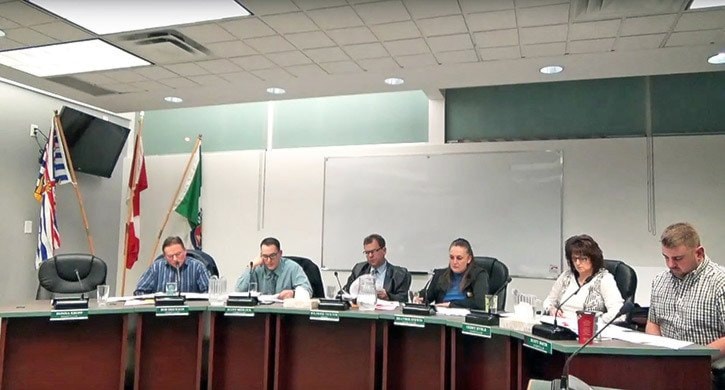Snow clearing policy
It would cost about $40,000 annually for the District of Hope to hire a contractor to do sidewalk snow clearing.
District operations director Kevin Dicken generated this figure using five years of snowfall data, which worked out to seven events on average, and also includes four applications of salt, brine or sand on the 5.1 kilometres of sidewalks.
Mayor Wilfried Vicktor supported this because historically the District has taken up this responsibility and he said seniors and people who leave early in the morning would appreciate it.
“It’s a little tough for certain people to help out with sidewalk snow removal,” said Vicktor.
Coun. Scott Medlock said the $40,000 was more than he expected, but still finds that reasonable and supports it.
“I’d love to be able to say this is a walkable community all times of the year,” said Medlock. “I see people walking around as it is now, and they’re walking on the road, and it’s dangerous. And I don’t want to see the District become liable in that situation either.”
Medlock said he has done research online to find out if municipalities have been able to push the liability to residents when someone slips and falls, but he has not been able to find a case.
“It’s a policy, I think, we could include it, see how it goes, take a look at it again,” said Medlock.
Coun. Gerry Dyble shared her reservations because this represents a 0.5 per cent tax increase.
“I’m not opposed to it but I’m also considering as we move into budget season what other requests will be needed,” said Dyble.
Chief administrative officer John Fortoloczky suggested that staff will come up with an option with the District being responsible for snow clearing, and bring this back during budget discussions.
Dicken’s report to council stated that bringing the service in-house would require $120,000 in equipment and $5,000 in annual maintenance, and increased exposure to claims.
The District currently budgets $6,000 for sidewalk snow clearing.
Habitat for Humanity
An organization that builds houses for families with challenges needs land to build four homes in Hope.
Habitat for Humanity Upper Fraser Valley’s board chair Steven Dunton said they provide home ownership in exchange for 500 hours of work and 30 per cent of a family’s income. Habitat pays strata fees and taxes before amortizing at a zero per cent interest rate.
They have an income limit of $58,000 and are looking at a maximum of $65,000, but they have a preference for families with a $27,000 to $35,000 income.
Dunton said they have not started in Hope because they need to find land before identifying candidates.
Community forest revenue policy
Council endorsed a draft revenue sharing policy for the Cascade Lower Canyon Community Forest (CLCCF) board, which they will use when disbursing funds to their shareholders.
The new policy outlines who the funds can be given to and towards what purpose. CAO Fortoloczky said that the previous CLCCF board did not have such a policy that was endorsed by their partners — Yale First Nation (YFN), the Fraser Valley Regional District (FVRD) and the District of Hope.
“Monies were given out and people didn’t always agree with the criteria that were developed as far as who is eligible to receive the funds, how much they’re eligible and how they got the money, and when,” said Fortoloczky.
On Nov. 13, 2014, that issue culminated in the sacking of the board after concerns over legalities of their procedures. Then-mayor Susan Johnston said they “made a decision that was going to jeopardize the entire community forest.”
Speaking for the board in a letter published in The Standard on Dec. 11, 2014, Don Wiens said that he was proud of their achievements, and complained of stonewalling from their partners.
“We as a board simply gave up waiting for direction from the partners regarding donation and grant distribution,” he wrote.
This policy removes the board from the detailed granting of money and states that 33 per cent of revenues and disbursements will go to each partner.
Partners decide where the money goes, subject to guidelines. All partners can contribute 25 per cent of their share to a joint legacy funds to regional projects. Yale First Nation can decide what they want to do with the rest of the 75 per cent.
The District and FVRD must allocate 25 per cent each to projects helping youth and seniors, regional community at large and finally, arts, culture, heritage and recreation. For-profit entities such as industries or businesses cannot receive funds.
The YFN and the FVRD will also have to endorse this policy.
